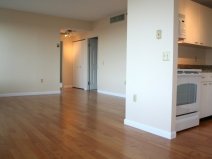Help Arranging Furniture

Here a professional room-stager and designer offers tricks to help make your rooms look their very best.
By Marie Proeller Hueston
Stripped of all its furnishings, an empty room can be intimidating — or inspiring! For design consultant Robin Long Mayer, it’s definitely the latter. In her work as an editor for CountryLiving and New York Spaces magazines and as the principal of Robin Mayer Design, she has learned a thing or two about the optimal placement of sofas, tables, beds and accessories that fill our homes. While the ideal arrangement in your own rooms will depend on factors such as the size and layout of each particular space, there are certain guideposts that can put you on the right path. Mayer offers the following insights:
Keep a clear path
You always want to be invited into a room visually, without any obstructions in your path. Be mindful of the number of items you are placing in a room. Use only what you need for comfort, storage and utility, and find new homes for extraneous pieces.
Avoid the perimeter
Source: Kerrie Kelly Design Lab
Lining furniture along the perimeter of a room creates a very stagnant look. That being said, we don’t all have the luxury or space to float all our furniture in the center of the room. If a large piece like a couch makes most sense against the wall, float a few smaller pieces — like two comfortable armchairs — in front of it to balance the look.
Encourage conversation
No matter what size your living room is, you should always consider seating that lets you share the space with a friend. Positioning a couch and two chairs near a focal point, or even two love seats or two chaises facing each other, is a lovely way to start.
Consider dining dynamics
Source: Lori Brock
As a general rule, the dining table and chairs occupy the middle of a room. If there is a chandelier overhead, be sure it does not obstruct views across the table. A sideboard, hutch, console or even a chest of drawers along a wall of the room can add much-needed storage for linens and flatware, and also provide a surface for additional ambient lighting.
Think about function
To determine what pieces you’ll need in the kitchen, think about how you use the space. If you love to cook and entertain, an island or movable workstation is a sensible investment. Seating is vital as well. Choose a table and chairs if you have the room, or find comfortable stools that can tuck under a counter when not in use. If space allows, I highly recommend a couch in the kitchen!
Related posts:

 Mirrors act as magicians in your home: They make spaces appear larger, multiply light, and duplicate views. Depending on their size and placement, they can play…
Mirrors act as magicians in your home: They make spaces appear larger, multiply light, and duplicate views. Depending on their size and placement, they can play… Layout for Small Rooms Strip/Basic Home Office Layout. C. Roseberry Create a Functional and Organized Workspace Tired of working in your home office because it s…
Layout for Small Rooms Strip/Basic Home Office Layout. C. Roseberry Create a Functional and Organized Workspace Tired of working in your home office because it s… This cozied-up formal dining room is wonderful for those who have a large family or group of friends and often find themselves throwing dinner parties or hosting…
This cozied-up formal dining room is wonderful for those who have a large family or group of friends and often find themselves throwing dinner parties or hosting… Will it work in the space I have planned? Our published dimensions (e.g. 93 Wx46 Dx32 H) width x depth x height in inches, will help you decide if your furniture…
Will it work in the space I have planned? Our published dimensions (e.g. 93 Wx46 Dx32 H) width x depth x height in inches, will help you decide if your furniture… Schlafzimmer: Ideen, von der Einrichtung bis zur Deko Überlegen Sie sich vor dem Einrichten die Anordnung Ihrer Schlafzimmermöbel. Ist der perfekte Standort für…
Schlafzimmer: Ideen, von der Einrichtung bis zur Deko Überlegen Sie sich vor dem Einrichten die Anordnung Ihrer Schlafzimmermöbel. Ist der perfekte Standort für…